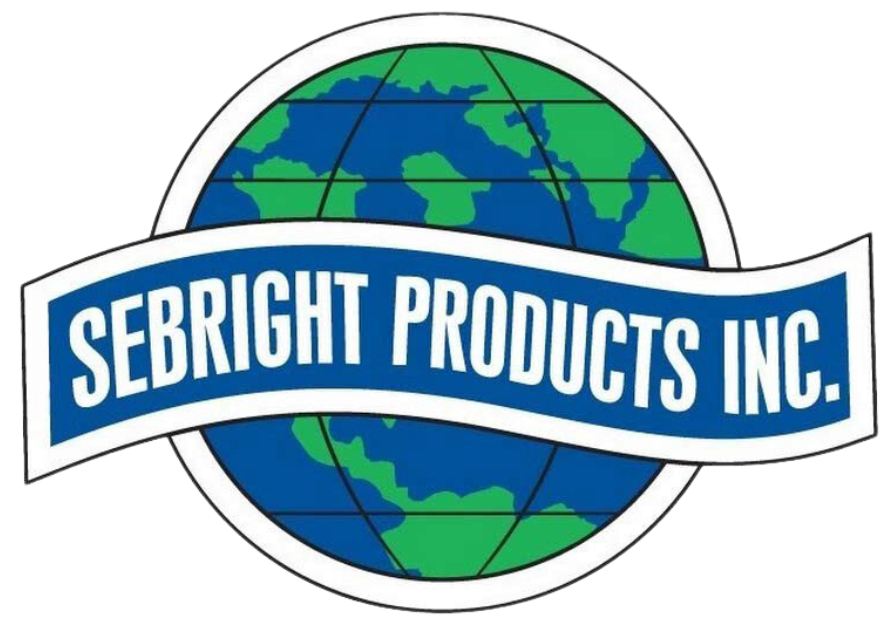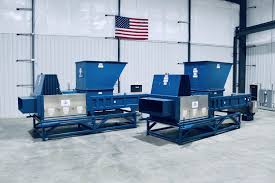Sebright Products Drives 45% YoY EBITDA Increase Through Efficiency Gains and Cost Reduction with COUNTERPART
Executive Summary
Sebright Products, a leading West Michigan provider of waste handling and recycling equipment, builds large custom solutions for commercial facilities domestically and internationally. Despite their established reputation in a growing industry, Sebright experienced the same issues plaguing many Engineer-To-Order (ETO) companies. Lack of cost visibility, disconnected workflows, manual processes, and inefficient project management were all impacting profitability.
New executive leadership recommended changing their Enterprise Resource Planning software to help drive efficiency, control costs, and create processes that could scale with growth. Sebright selected COUNTERPART as their ERP solution and achieved their smoothest implementation ever with the highest return on investment – increasing EBITDA by 45% after the first year.

Company Background
Founded in Hopkins, MI in 1984, Sebright Products (Sebright) has grown significantly and continually expanded their line of waste and recycling solutions. After starting as a manufacturer of custom waste compactors, Sebright companies now deliver a range of innovative equipment for material processing and handling across industries like wastewater treatment, chemical manufacturing, and mining operations.
Their expansion has included a new division, Bright Design, to focus on specialized use cases. Sebright offers full-scope solutions, from custom design and manufacturing to installation and post-
sale service.
Current Sebright CEO and President Emir Avdić first joined the company in 2021 as COO. Emir’s mandate was to improve efficiency, starting with a top-to-bottom review of the systems, processes, and software affecting their scale as an ETO manufacturer.
Emir and company leadership knew that a better ERP was central to achieving company growth goals.
Leadership saw the deficiency of their current solution (eci M1, formerly E2), which was increasingly focused on
automation to support make-to-stock manufacturers. While Sebright’s solutions share similarities in design and materials, the equipment is customized for each customer application.
Additionally, E2 did not offer functionality for departments like engineering and assembly, meaning the solution was “siloed” to purchasing and inventory.
E2 (now eci M1) made it difficult to accurately and efficiently estimate costs, manage projects, and determine profitability.
Key Challenges with Existing ERP Software
Growth Planning
To successfully plan, drive process efficiency, and improve long-term profitability, Sebright needed to solve systemic challenges that obscured costs in every department. These hidden costs had a substantial and direct bottom line impact. Emir and his team needed the ability to answer business-critical questions like:
- Where is the greatest opportunity for efficiency?
- Where do we have economies of scale?
- What are the exact costs of goods sold?
- Where are we experiencing bottlenecks and what is the cost?
- How should we adjust costs when a project changes?
After observing process flow and team interactions, Emir knew that challenges with their existing ERP solution would prohibit cost visibility and fail to support the core processes needed to predictably and sustainably grow.
Challenge | Root Cause |
Disconnected Workflow | Lead engineers spent multiple days manually transferring engineering data from a printed BOM to their ERP. This caused expensive bottlenecks and a higher potential for errors. More than $550K was spent annually on this manual process and printing costs. |
Project Management | Project changes and revisions required continual communication, data management between multiple systems, and unnecessary downtime as departments waited for the latest information. |
Cost Visibility | Internal price variations in quoting, lack of shared knowledge, and manual revision tracking made it nearly impossible to retain cost visibility from kick-off to completion. As material and labor costs rose, management lost track of ways to concretely improve profitability. True costs were only assessed at year end. |
Waste Reduction | Inefficient change management processes contributed to waste, both in staff downtime (or work duplication) and materials. The disconnect between engineering and downstream departments meant waste was accepted as a necessary problem in the status quo. |
Selecting their ERP Solution
Sebright’s Process
Prior to joining Sebright, Emir worked as a consultant with multiple international manufacturing organizations to help them evaluate, purchase, and integrate new ERP solutions. After supporting 14 ERP implementations, he knew the process could be difficult, stressful, and lengthy. With Sebright’s core issues now identified, Emir was referred to COUNTERPART by an industry peer.
Create Implementation Team
To ensure a truly cross-functional solution was selected and adopted, Sebright created an internal evaluation team and empowered an implementation champion.
Evaluate Solutions
This team quickly narrowed down their choices to 3 from 10 possible solutions,
including Microsoft Dynamics 365, Total
ETO, Netsuite.
Demo and Decide
A short demo with COUNTERPART
showed its unique advantages over more
established competitors.
Why COUNTERPART
Ultimately, the decision to adopt COUNTERPART was unanimous among the selection committee, which included all department managers – from engineering to sales and accounting.
In addition to key features like proprietary CAD integrations, Sebright trusted COUNTERPARTS’ commitment to a flexible, hands-on implementation approach. A protracted and disruptive implementation was a non-starter. According to Emir, COUNTERPARTS’ shorter timeline and superior service resulted in “the smoothest implementation he’s ever experienced.”
“COUNTERPART was like an extension of our team.”
-Emir Avdic
Sebright CEO and President
Results & Benefits
EBITDA Impact
Sebright increased their YoY EBITDA by 45% in 2023, despite facing the same sales pressures and economic uncertainty as their competitors. Additionally, Sebright improved their net margin by 37% YoY through process efficiency and more accurate costing, pricing, and quoting. In addition to the bottom line impact, Sebright has unified operational processes, cost insight, and communication across business units.
Challenge | Solution | Results | Impact |
Disconnected Workflow | COUNTERPART seamlessly connects engineering with procurement and manufacturing through a shared application and real-time CAD data. | Engineers spend no time | Substantial reduction in labor costs by eliminating redundant work. Increased capacity for engineering to refocus valuable time on value-add activities and new projects.
|
Project Management | COUNTERPART gives all downstream departments, from manufacturing to procurement, real-time data at any level needed, from anywhere. | All teams could sequence and prioritize work and find the right level of product detail, from description to material and finish by quickly referencing CAD images directly from engineering. | Cost savings and efficiency gains for all departments through asynchronous, self-serve access to engineering data. This includes better response time to vendors and more accurate quotes. |
Cost Visibility | COUNTERPART captures and easily displays costing information across departments and processes. This tracking exposes true costs at any project phase. | All departments shared the same pricing information, driving consistency and uniform tracking across manufacturing, assembly, purchasing, and sales. | Total visibility into all relevant costs significantly improved forecasting, customer quoting, and inventory valuation. |
Waste Reduction | COUNTERPART simplified and consolidated change management company wide. All revisions and change updates are seamlessly pushed to the shared assembly image as defined by engineering. These changes are automatically detected and flagged. | The streamlined access to and identification of changes keeps teams on track without unnecessary time on | Significant cost savings through preventing re-work, and allowing fast identification of specific components through intuitive, up-to-date properties and images. |
Growth Planning
Sebright leadership gained more control over operations and financial governance, driving the following improvements:
- Accurate annual forecasting due to precise, real-time cost and pricing insights.
- Easy and immediate adjustments to customer quotes, which preserved margin increases despite project changes mid-build.
- Matching inventory levels to true demand, allowing better planning and analysis of needs.
What Helped Sebright Find Success?
Problem-Solution Fit
COUNTERPART solved precise, identified pain points in a company of Sebright’s size and technology profile, even with their unique needs as an ETO manufacturer.
Strong Internal Champion
A critical Sebright staff member was able to help teams quickly get up to speed and serve as an internal subject matter expert.
Executive Support & Vision
With support from COUNTERPART, Sebright teams adopted the new system with proper alignment, direction, and clear sense of the “why” – from engineering to accounting.
Two years after the initial selection and implementation, Sebright continues a strong relationship with COUNTERPART, continually unlocking new solution value through efficiency gains, expanded training, and consulting assistance.

